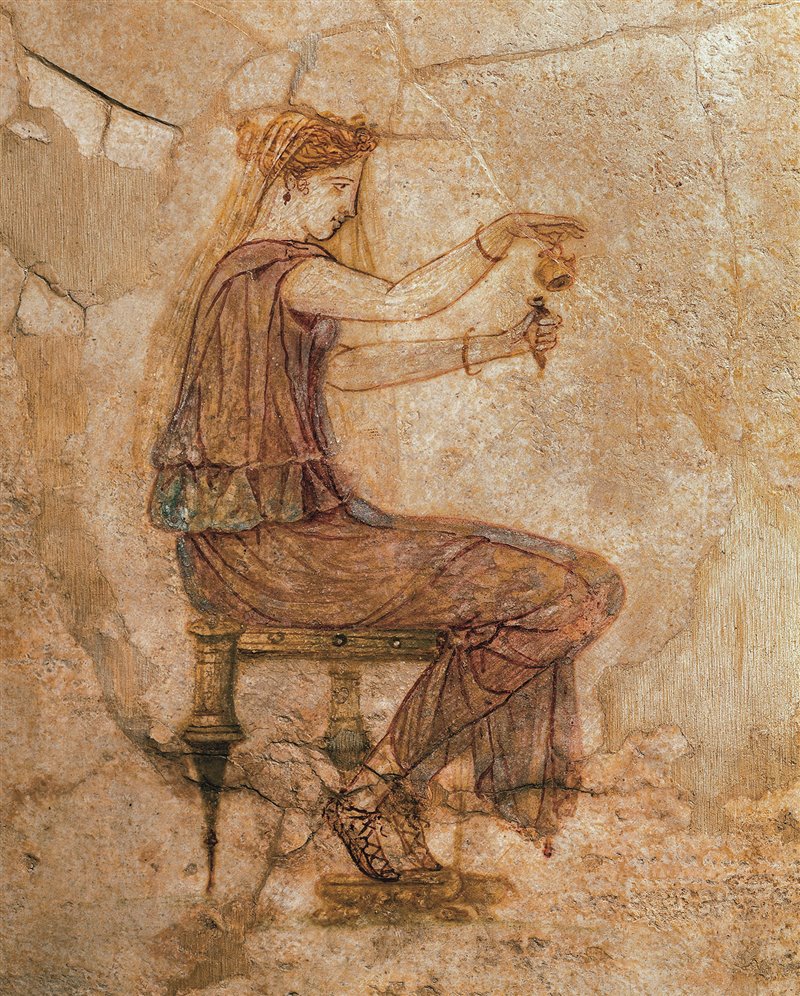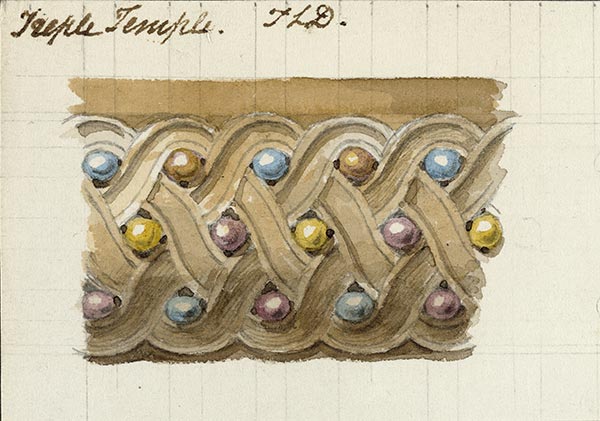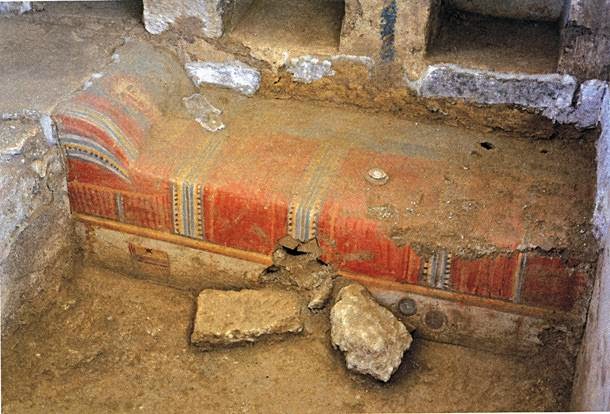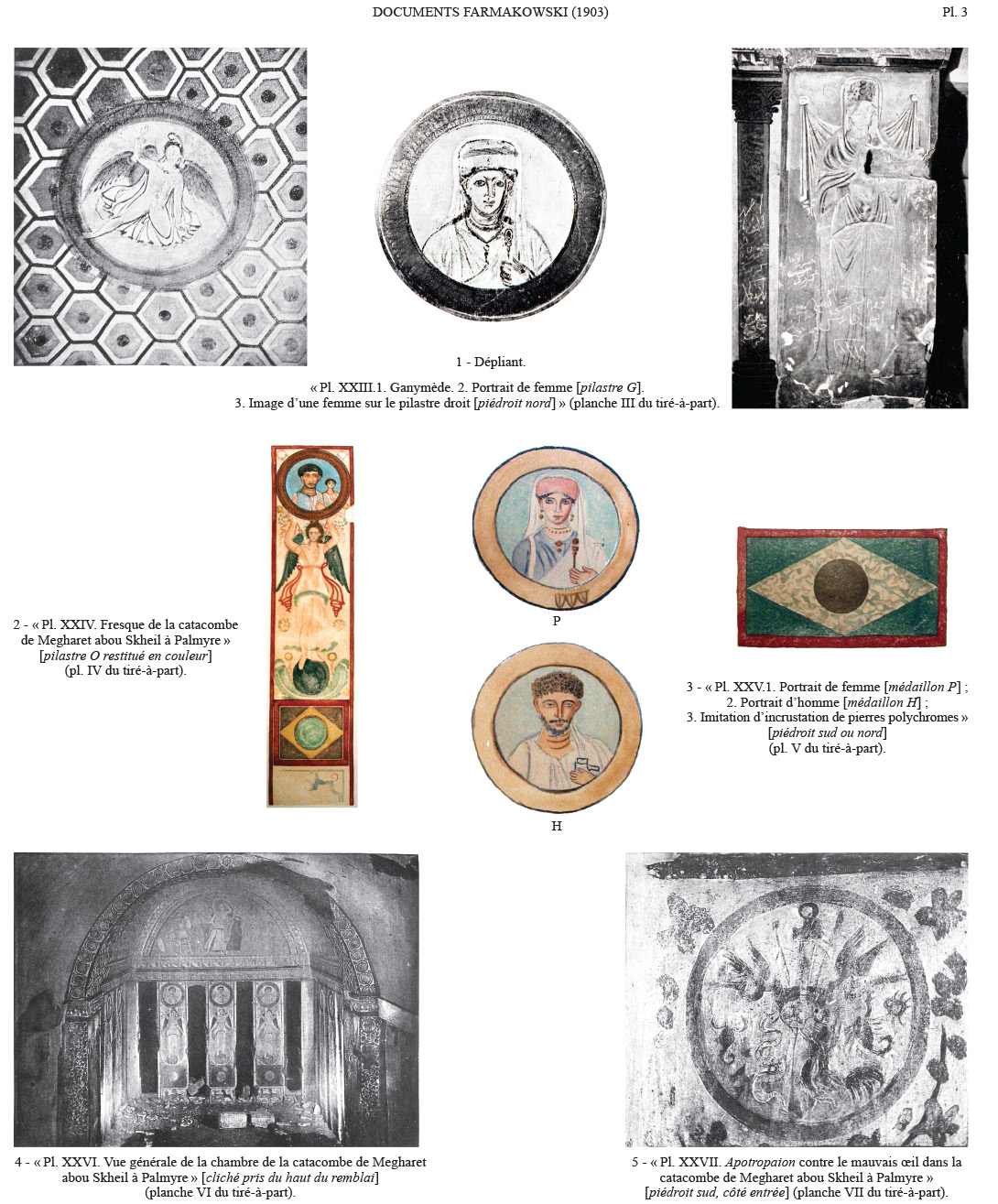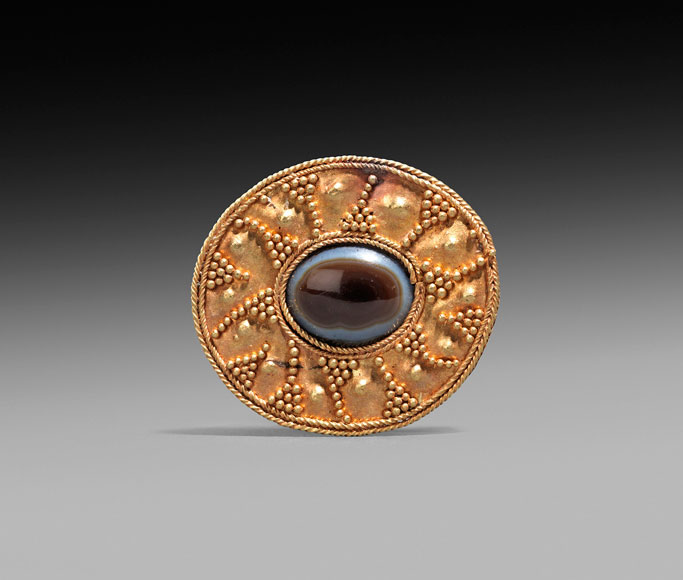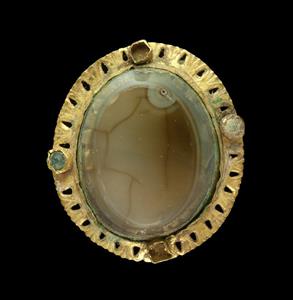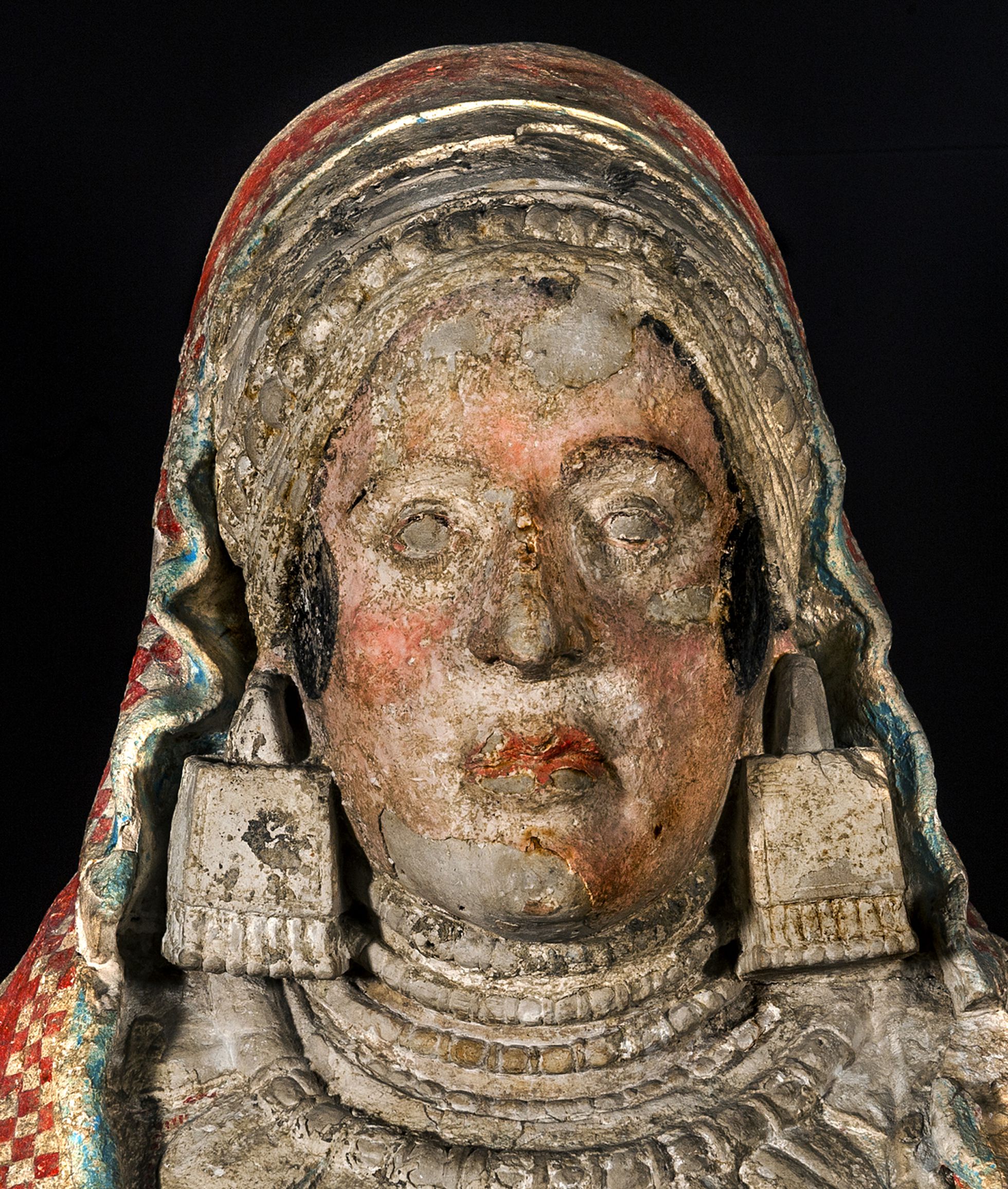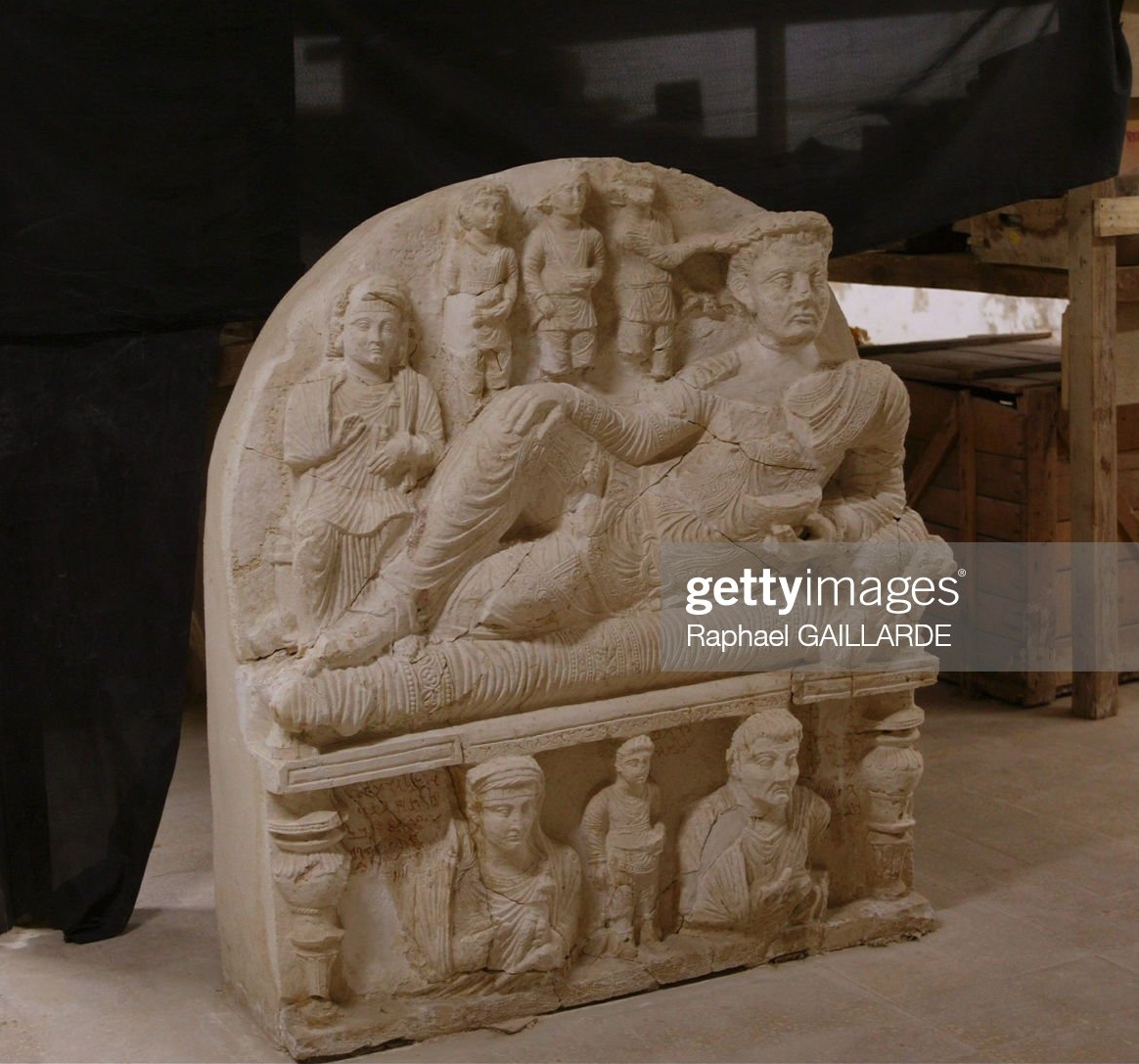
The painter is warming a tool over a brazier, in the center there’s a box with pigments. On an easel – the work in progress already framed. On the wall 3 finished & framed portraits
The painting, plaster on limestone, is on display in the Hermitage
Description from the publication of Art Institute in Chicago https://publications.artic.edu/roman/reader/romanart/section/1965
“A remarkable painting survives on the interior of a first-century A.D. sarcophagus found at Kerch (ancient Panticapaeum) in Crimea. It shows a painter at work in a colonnaded space (his studio?), warming a tool over a brazier as he works on a painting resting on an easel (fig. 155–156.1). The box in the center with many compartments and cover flaps holds raw and ground pigments and other materials. On the wall hang three completed portraits, one in a simple square frame, the other two mounted as shield portraits, clipeatae imagines — a deliberate presentation of the subjects, whether living or deceased, as godlike.”
The ionic capital covered by a fresco found under an apse at the Kasta Tomb near ancient Amphipolis in Macedonia, Greece, still has traces of the polychrome. The marble columns and the architrave were covered with white background for the red, black and blue paint. 4th C BCE
https://news.gtp.gr/2014/08/21/excavation-continues-at-ancient-amphipolis-greece-more-discoveries/
https://news.gtp.gr/2014/08/25/archaeologists-unveil-more-findings-from-excavation-in-amphipolis-greece/
Three stone sarcophagi from a Cypro-Classical tomb at Kition [article]
by Giorgos Georgiou
Painted sarcophagus from Cyprus ~400 BCE with very well preserved polychrome, encaustic on marble. The border of a lid is decorated with a repeating sequence: a myrtle branch in the center & a branch of small violet flowers on the sides.
Luxury and elegance of the Classical period
Marble pyxis from the National Museum in Athens collection (inv. no 11372) with a delicate floral motif painted with purple and bright yellow is dated to the last quarter of the 5th century BCE. Purple flowers are attached to yellow-brown curling stems. The same colors and gold leaf were used to paint two seated figures on the lid of this vase. Woman on the left wears a bracelet painted with yellow which was identified as orpiment, an iron based ochre was used for the area of the hair.
“It is thus possible that murex purple was applied, or perhaps a purple organic colorant deriving from a plant or a weed, such as the rocella tinctoria recently identified on the collection of Greek terracotta figurines in the Louvre. Bright yellow used to depict the bracelet of the woman to the left was identified as orpiment, while an iron based ochre was used for the area of the hair.”
Sources:
“Precious colours” in Ancient Greek polychromy and painting : material aspects and symbolic values; Harikleia Brecoulaki
In “Revue archeologique” 2014/1 (n ° 57) , pages 3 to 35.
“Colour and Luxury Three Classical Painted Marble Pyxides from the Collection of the National Archaeological Museum, Athens”; Harikleia Brecoulaki, George Kavvadias, Giovanni Verri
© J. Stephens
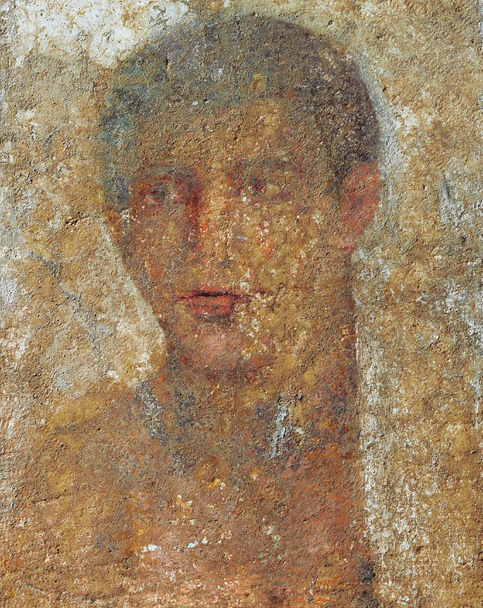
Encaustic on marble, portrait of a young man from a grave stele, with an inscription “ΘΕΟΔΩΡΟΣ ΧΑΙΡΕ” Theodoros Farewell. Greek, 1st century BCE; in the Archaeological Museum of Thebes.
https://mthv.gr/el/monimi-ekthesi/romaikoi-hronoi/#image-22…
https://greek-museums.tumblr.com/tagged/Archaeological-Museum-of-Thebes












